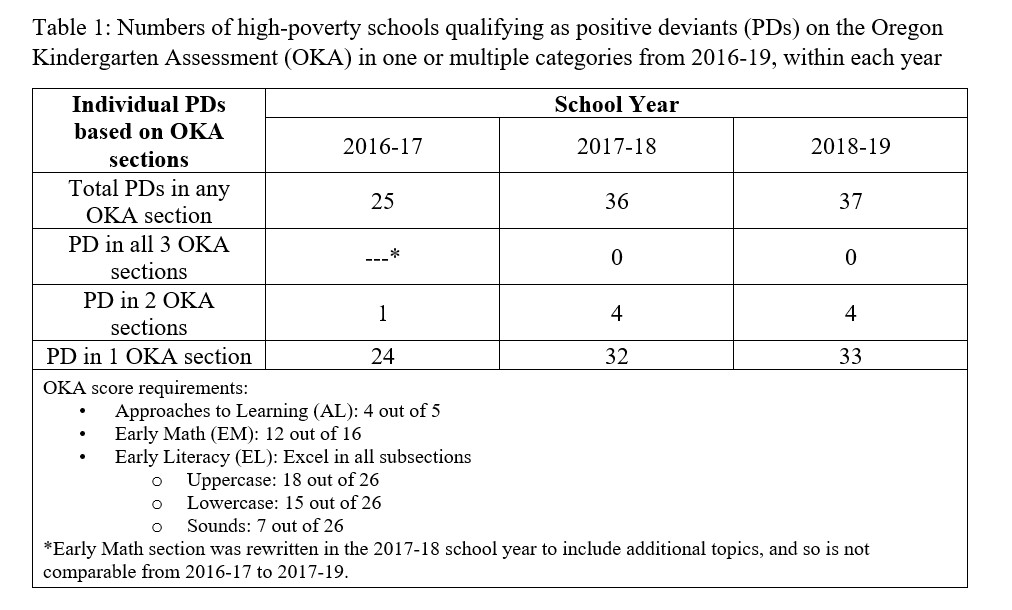Public Health & Prevention
Public Health & Prevention 2
98 - Positive deviance within school readiness in Oregon: Trends in successful high-poverty communities from 2016-2019
Publication Number: 98.15
.jpg)
Gina M. Richardson, MD, MPH (she/her/hers)
Medical Student
Oregon Health & Science University School of Medicine
Portland, Oregon, United States
Presenting Author(s)
Background:
Poverty is a driving factor impacting school readiness (SR), with children from low-income areas often entering kindergarten behind their peers. However, some low-income schools have students who demonstrate high SR as measured on kindergarten entry assessments. Through positive deviance inquiry, low-income schools “beating the odds,” known as positive deviants, may be identified.
Objective:
Use positive deviance inquiry to identify low-income schools excelling on the Oregon Kindergarten Assessment (OKA) in three areas of SR: social-emotional development, math, and literacy.
Design/Methods:
Public data from 2016-2019 were used to assess school-level scores on three OKA sections: Approaches to Learning (AL) (measuring social-emotional development), Early Math (EM), and Early Literacy (EL). A positive deviant was defined as a “high-poverty school” serving ≥75% of students free or reduced lunch, with a school average score on AL, EM, or EL sections above a predetermined cutoff (e.g., a score of ≥4 on AL demonstrates strong social-emotional skills). Score cutoffs were determined via state standard, or national performance if no state standard existed. After identifying schools, descriptive statistics across all years of data were used to examine trends.
Results:
From 2016-2019, 764 schools completed at least one section of the OKA; 239 high-poverty schools were identified, and therefore eligible to be positive deviants. Over three years we identified the most positive deviant schools in AL (19-23), a similar amount in EM (17-20), and the fewest in EL (1-3); representing ~15% of high-poverty schools. Only three schools consistently excelled in at least one section over three years. Some schools (range 1-4) excelled in two areas within a year, but no schools excelled across all components of the OKA in any year (Table 1), nor were schools consistent within OKA sections across all years (Figure 1).
Conclusion(s):
We identified about 15% of high-poverty schools with students excelling in at least one OKA measure of SR over the three-year study period. The data show students at some high-poverty schools are entering kindergarten with strong social-emotional and math skills, but may be less prepared in literacy. However, OKA performance had significant variability from year to year. Qualitative exploration within communities may elucidate successful approaches or key programs to implement/expand in other high-poverty schools and surrounding communities. Future work must also explore OKA performance variability, as well as identify community and family-level strategies to ensure sustained SR across all domains.
.jpg)
